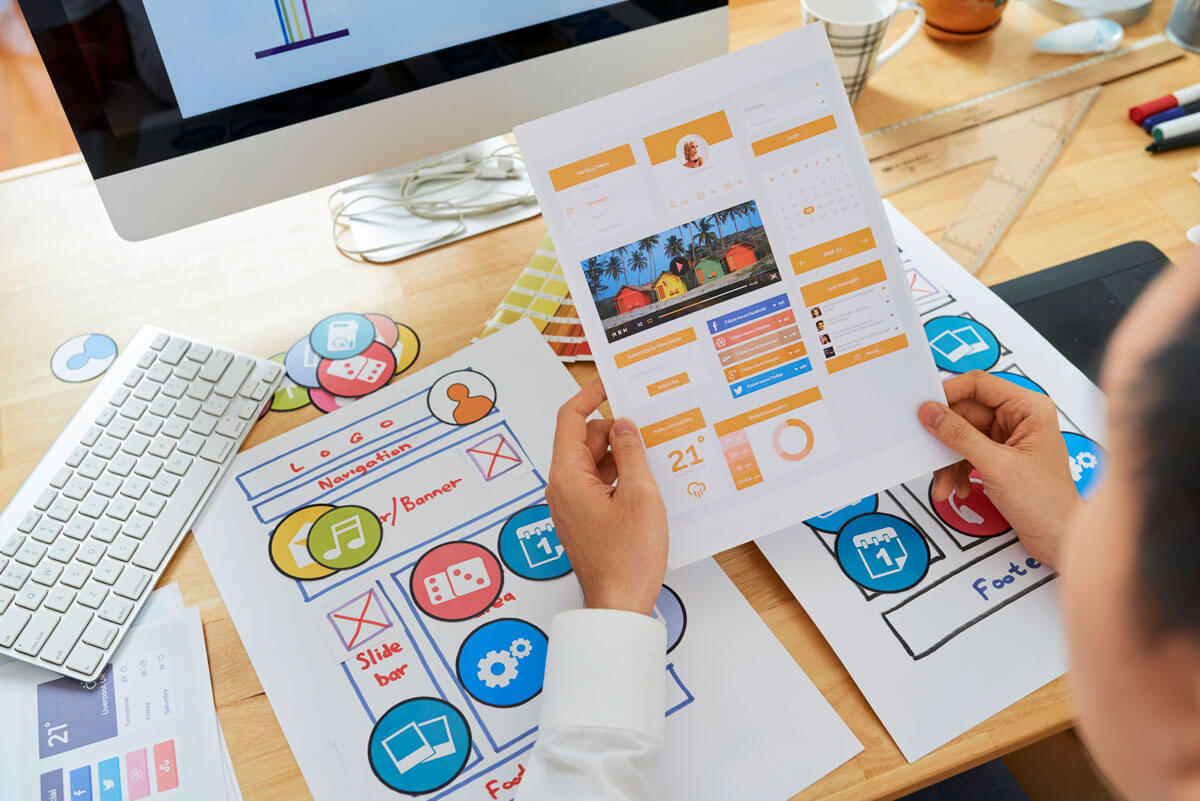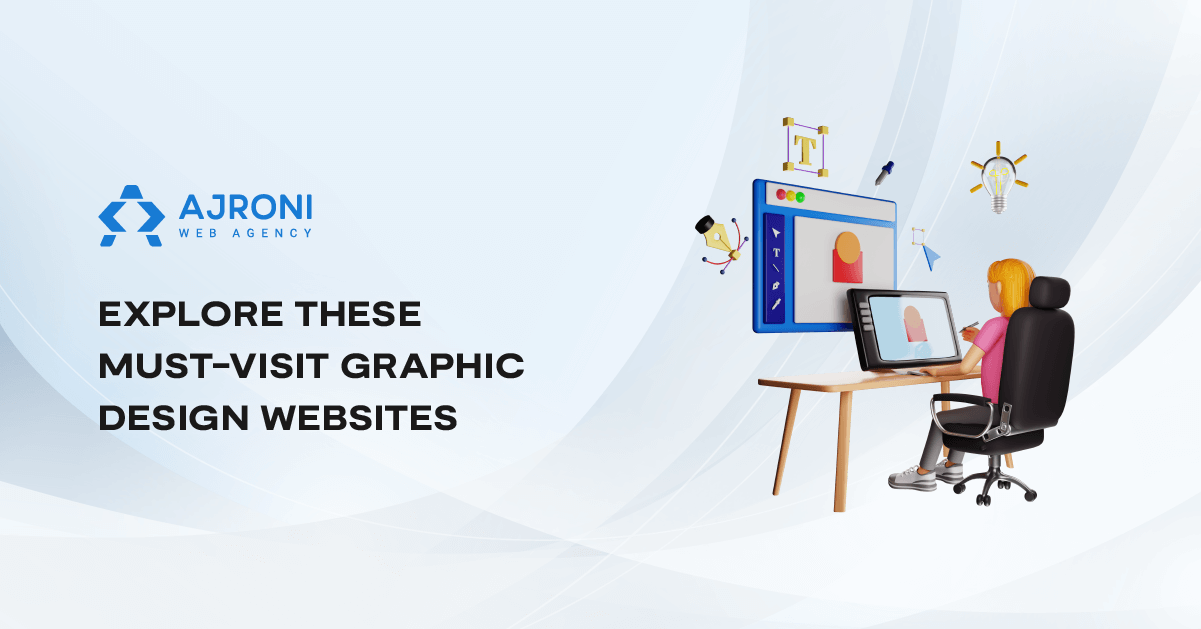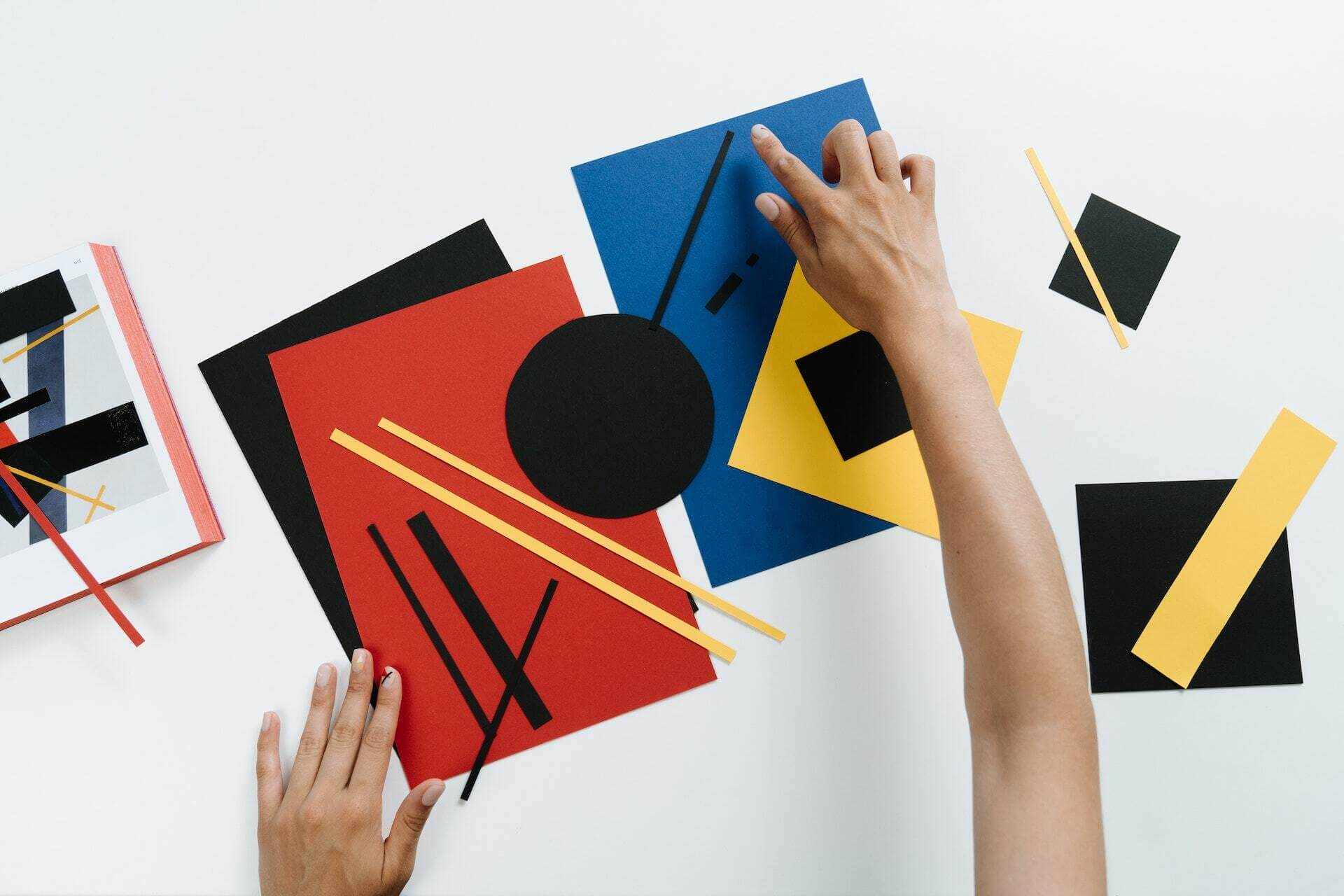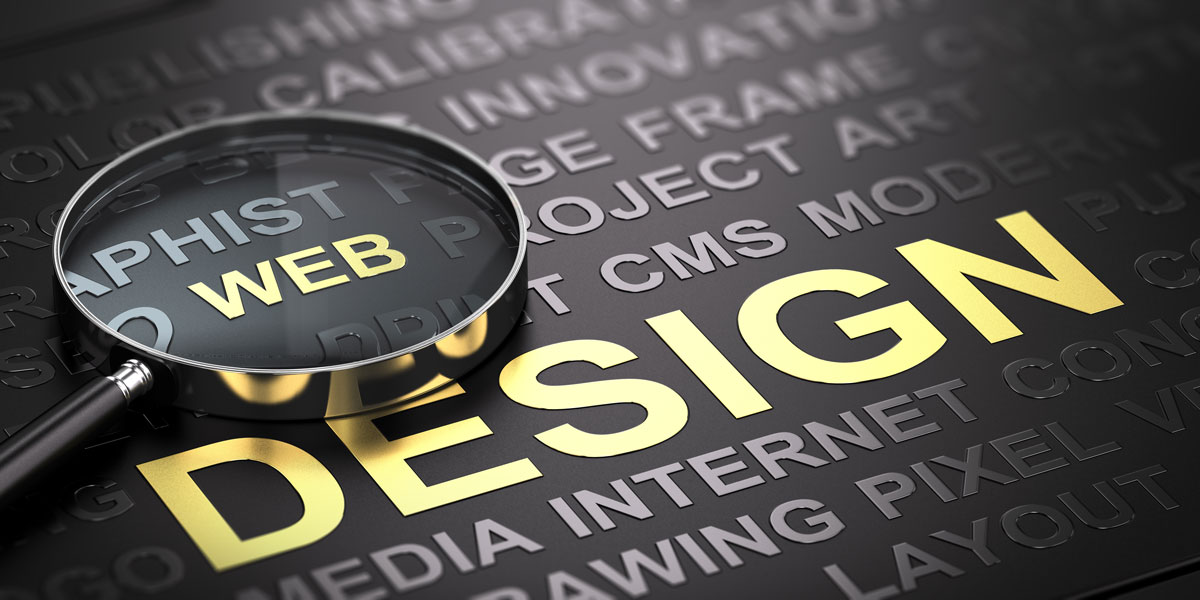User Interface (UI) design is crucial to generating engaging digital experiences for users. A successful product depends on a well-designed user interface. If the user interface is poorly designed, the product is likely to fail. This comprehensive article will help you understand the UI design process. We will break it down and show you how to transform an idea into an exceptional user interface. This interface will captivate and engage your target audience.
Understanding the Essence of UI Design
Image by Freepik
What is User Interface (UI) Design?
UI design is the action of creating a digital product's visual elements and interaction patterns. It can be applied to websites, mobile apps, or software. The goal is to make sure that users have a smooth and enjoyable experience.
It's all about how users interact with and perceive your digital creation.
Why Does UI Design Matter?
UI design matters because it directly influences how users feel about and interact with your product. A well-designed UI can increase user satisfaction. It can also improve usability and contribute to higher retention rates. Ultimately, a well-designed UI can lead to business success. Conversely, a poorly designed UI can deter users, creating frustration and abandonment.
The UI Design Process Unveiled
The UI design process includes specific steps. Each step is important to achieve the desired outcome. Let's break down the process into individual steps and go through them step by step:
1. Research and Analysis
Before you start designing, it is important to gather insights about your target audience, their needs, and the competition. This phase includes:
- Conducting user interviews and surveys.
- Analyzing user feedback.
- Exploring competitors' UI design patterns.
- Creating user personas to understand your audience better.
2. Define Goals and Objectives
Once you've gathered research data, defining clear goals and objectives for your UI design project is crucial. These objectives should align with both user needs and business objectives.
Key actions:
- SMART Goals: Set Specific, Measurable, Achievable, Relevant, and Time-bound goals to provide a clear direction for your design efforts.
- Alignment: Ensure your design goals align with your company's mission and vision.
3. Ideation and Brainstorming
Ideation and brainstorming sessions are the creative core of the UI design process. This is where you generate a variety of design concepts and ideas.
Key activities:
- Sketching: Sketch out rough design concepts on paper or digitally.
- Mind Mapping: Create mind maps to visualize and organize ideas.
- Team Collaboration: Collaborate with team members to encourage diverse perspectives and innovative solutions.
- User Story Mapping: Develop user story maps to outline the user journey and touchpoints.
4. Wireframing
Wireframing is where you start translating your ideas into a visual format. Wireframes are low-fidelity representations of your UI's layout and structure.
Key considerations:
- Structure: Define the overall structure and layout of your UI.
- Hierarchy: Establish the hierarchy of elements on the page, indicating which elements are more prominent.
- Navigation: Plan how users will move through the interface.
Image by Freepik
5. Prototyping
Prototyping takes your wireframes to the next level by adding interactivity. It's a critical step in visualizing and testing the functionality of your design.
Key actions:
-
Clickable Prototypes: Create interactive prototypes using design tools that allow users to navigate your design and interact with elements.
Usability Testing: Conduct usability testing to identify potential usability issues and gather user feedback.
6. Visual Design
Visual design is where aesthetics come into play. This step involves choosing color schemes, typography, and visual elements that align with your brand and create an appealing interface.
Key considerations:
- Branding: Ensure that your visual design aligns with your brand's identity and values.
- Color Psychology: Use color strategically to evoke emotions and guide user behavior.
- Consistency: Maintain consistency in applying colors, typography, and imagery.
7. Interaction Design
Interaction design focuses on how users will engage with your interface. It involves defining user flows, button behaviors, and microinteractions that enhance the user experience.
Key activities:
- User Flow Diagrams: Create diagrams that outline the paths users will follow within your UI.
- Button and Interaction Design: Define the behavior of interactive elements, including hover effects, button states, and transitions.
- Microinteractions: Add subtle animations and feedback to make interactions more intuitive.
8. UI Design Patterns
Leveraging established UI design patterns can save time and improve user comprehension. These patterns include common navigation menus, form layouts, and iconography.
Key actions:
- Pattern Libraries: Build libraries of reusable UI components to ensure consistency throughout your design.
- Customization: Tailor design patterns to fit your specific project while maintaining user familiarity.
9. User Testing
User testing is a crucial step for validating your design with real users. It helps identify usability issues and gather valuable feedback for improvement.
Key activities:
- Test Plans: Create detailed plans outlining testing objectives, tasks, and scenarios.
- Participant Recruitment: Recruit a diverse group of users representing your target audience.
- Feedback Analysis: Analyze user feedback and make iterative design improvements.
10. Development and Implementation
Collaboration with developers is essential to bring your design to life. Maintaining open communication is crucial to ensure that the final product aligns with your design specifications.
Key actions:
- Design Handoff: Provide developers with design assets and documentation, including style guides and design specifications.
- Collaboration: Work closely with developers to address design-related challenges during implementation.
11. Quality Assurance (QA) Testing
Before launching your product, thorough QA testing is necessary to identify and fix any bugs or issues that could affect the user experience negatively.
Key activities:
- Functional Testing: Verify that all interactive elements and features work as intended.
- Cross-Browser and Cross-Device Testing: Ensure compatibility across various browsers and devices.
- Performance Testing: Check for performance bottlenecks that could slow down the UI.
Image by Freepik
12. User Feedback Integration
Even after launch, the journey continues. Maintaining a user-centric approach is essential to collecting ongoing user feedback and making iterative improvements.
Key actions:
- Feedback Channels: Establish channels for users to provide feedback, such as surveys, feedback forms, or in-app feedback options.
- Continuous Improvement: Regularly review and prioritize user feedback to make incremental updates to your UI.
The Power of Good User Interface (UI) Design
Enhancing User Experience
A well-designed UI enhances the user experience by providing intuitive navigation, clear communication, and enjoyable interactions. Users feel more comfortable and confident using a well-crafted interface.
Boosting User Engagement
An engaging UI can keep users hooked, encouraging them to spend more time on your platform. Interactive elements and appealing visuals contribute to higher user engagement.
Fostering Brand Loyalty
Consistency in design and branding across all touchpoints establishes trust and fosters brand loyalty. When users consistently encounter a visually appealing and user-friendly UI, they are more likely to return.
Driving Conversions
A UI design tailored to your audience's needs can lead to increased conversion rates. Streamlined forms, clear calls-to-action, and intuitive layouts guide users towards desired actions.
UI Design Trends and Best Practices
1. Mobile-First Design
With the exponential rise in mobile device usage, designing for mobile-first has become a cornerstone of modern UI design. In this approach, we prioritize the mobile user experience over other platforms. We make sure that your interface is responsive and functions seamlessly on smartphones and tablets.
Image by Freepik
Key considerations:
- Responsive Layouts: Design layouts that adapt gracefully to various screen sizes and orientations.
- Touch-Friendly Elements: Create larger, touch-friendly buttons and navigation elements suitable for smaller screens.
- Performance Optimization: Optimize images and code to reduce loading times on mobile devices.
- Testing on Real Devices: Test your design on mobile devices to ensure compatibility and responsiveness.
2. Minimalism and Simplicity
Simplicity in UI design continues to be a prevailing trend. Minimalistic design removes unnecessary elements and distractions. It creates clean and uncluttered interfaces that prioritize essential information and actions.
Key considerations:
- Whitespace: Use whitespace effectively to provide visual breathing space between elements and improve readability.
- Clear Typography: Choose readable fonts and maintain consistent typography throughout your design.
- Iconography: Utilize intuitive and straightforward icons to convey information concisely.
- Streamlined Navigation: Simplify navigation menus and reduce the number of menu items to enhance user clarity.
3. Accessibility
Accessibility is not just a trend. It is a crucial practice. It ensures that your UI design is usable by everyone, including individuals with disabilities. Following accessibility standards benefits both users and businesses, as it broadens the potential user base.
Key considerations:
- Alt Text for Images: Provide descriptive alt text for images to assist users with screen readers.
- Keyboard Navigation: Ensure that a keyboard can navigate and activate all interactive elements.
- Color Contrast: Maintain sufficient color contrast to make text and elements legible for visually impaired users.
- Screen Reader Testing: Regularly test your design with screen reader software to identify and address accessibility issues.
4. Consistency
Consistency is a fundamental principle of UI design that contributes to brand recognition and user familiarity. Consistent design elements and patterns help users navigate your interface effortlessly.
Key considerations:
- Design System: Create a design system that includes guidelines for colors, typography, and UI components.
- Pattern Libraries: Develop pattern libraries that house reusable UI components for consistency across different parts of your application.
- User Interface Elements: Maintain consistency in the placement and behavior of UI elements such as buttons and menus.
5. Personalization
Personalization is an emerging trend that tailors the user experience to individual preferences. By collecting and utilizing user data, UI designs can adapt and provide a more engaging and relevant experience.
Key considerations:
- User Profiles: Permit users to adjust settings and establish profiles.
- Recommendation Engines: Implement recommendation algorithms that suggest content or products based on user behavior.
- Dynamic Content: Display personalized content or features prominently to enhance user engagement.
Conclusion
The UI design process is a journey that begins with a concept and ends with a user-friendly, visually appealing interface. You can create user interface designs that meet user expectations while also driving commercial success. Just follow the steps outlined in this guide and stay attuned to the latest trends and best practices.
Now that you understand the UI design process, you can start your design journey. You can now create user interfaces that will make a lasting impression on users.
Frequently Asked Questions
1. What is the difference between UI design and UX design?
UI design focuses on two main aspects of a digital product: the visual aspect and the interactive aspect. UX design focuses on ensuring a positive user experience. This includes improving usability and user satisfaction. UX design includes UI design as a subset. It focuses on creating the visual elements and interface that users interact with.
2. How can I learn UI design as a beginner?
If you want to start learning UI design, there are a few steps you can take. You can improve your UI design skills in several ways. You can take online courses. You can also read books about design. Another option is to practice using design tools. Additionally, studying existing UI designs for inspiration is helpful. Joining design communities and seeking feedback on your work can also be beneficial.
3. What tools are commonly used for UI design?
Popular UI design tools include Adobe XD, Sketch, Figma, and InVision. These tools offer features for wireframing, prototyping, and creating visual designs.
4. What is the importance of user testing in UI design?
Designers can gather feedback from real users through user testing. They can also uncover usability issues and make improvements to the UI based on data. It helps ensure that the final design meets user expectations and needs.
5. How do I stay updated on UI design trends and best practices?
To stay current in UI design, follow industry blogs, attend design conferences, join design forums, and subscribe to design-related newsletters. Engaging with the design community and regularly exploring new design projects can keep you informed.




